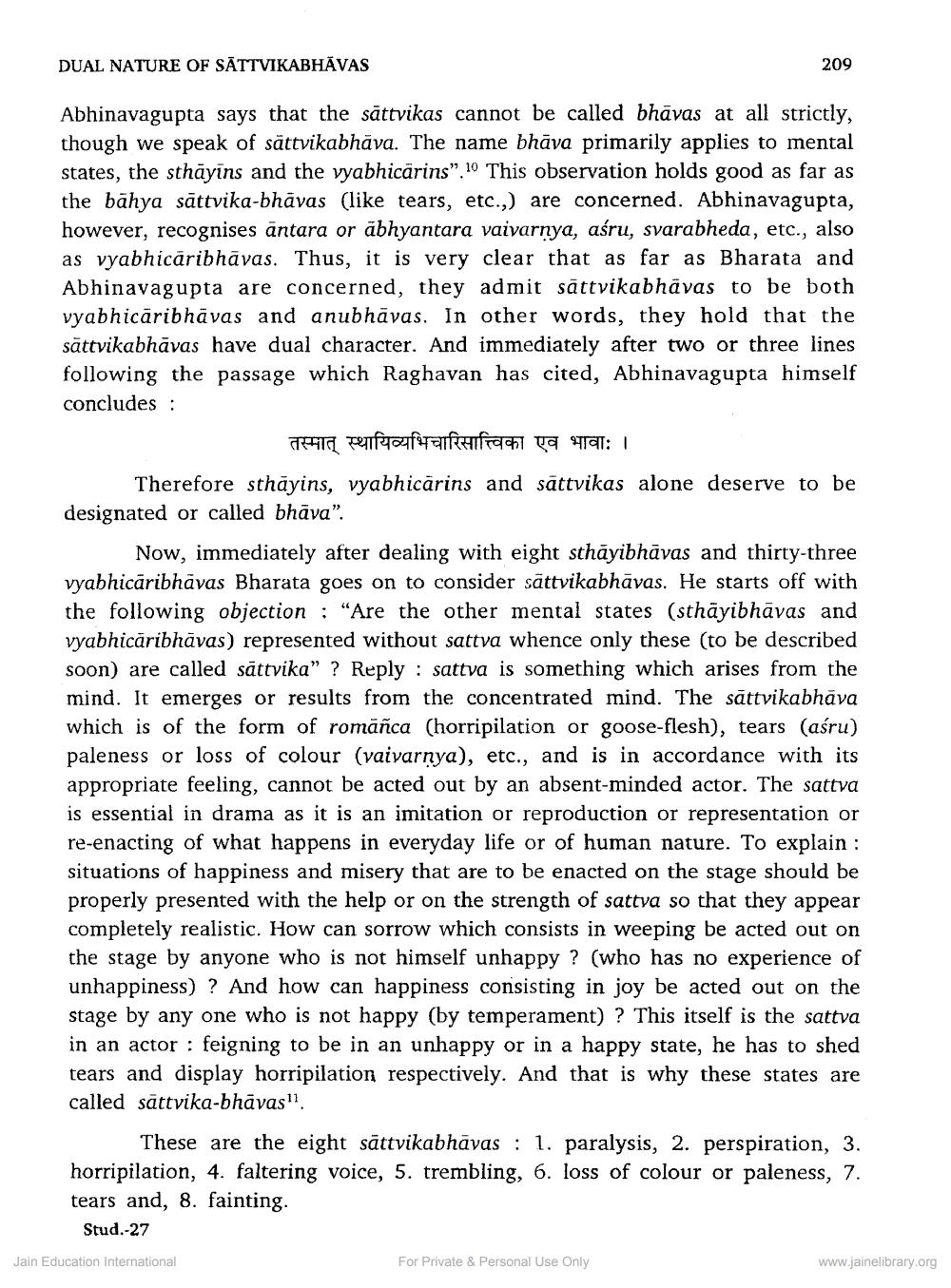________________ DUAL NATURE OF SATTVIKABHAVAS 209 Abhinavagupta says that the sattvikas cannot be called bhavas at all strictly, though we speak of sattvikabhava. The name bhava primarily applies to mental states, the sthayins and the vyabhicarins". 10 This observation holds good as far as the bahya sattvika-bhavas (like tears, etc.,) are concerned. Abhinavagupta, however, recognises antara or abhyantara vaivarnya, asru, svarabheda, etc., also as vyabhicaribhavas. Thus, it is very clear that as far as Bharata and Abhinavagupta are concerned, they admit sattvikabhavas to be both vyabhicaribhavas and anubhavas. In other words, they hold that the sattvikabhavas have dual character. And immediately after two or three lines following the passage which Raghavan has cited, Abhinavagupta himself concludes: तस्मात् स्थायिव्यभिचारिसात्त्विका एव भावाः / Therefore sthayins, vyabhicarins and sattvikas alone deserve to be designated or called bhava". Now, immediately after dealing with eight sthayibhavas and thirty-three vyabhicaribhavas Bharata goes on to consider sattvikabhavas. He starts off with the following objection ; "Are the other mental states (sthayibhavas and vyabhicaribhavas) represented without sattva whence only these (to be described soon) are called sattvika" ? Reply : sattva is something which arises from the mind. It emerges or results from the concentrated mind. The sattvikabhava which is of the form of romanca (horripilation or goose-flesh), tears (asru) paleness or loss of colour (vaivarnya), etc., and is in accordance with its appropriate feeling, cannot be acted out by an absent-minded actor. The sattva is essential in drama as it is an imitation or reproduction or representation or re-enacting of what happens in everyday life or of human nature. To explain : situations of happiness and misery that are to be enacted on the stage should be properly presented with the help or on the strength of sattva so that they appear completely realistic. How can sorrow which consists in weeping be acted out on the stage by anyone who is not himself unhappy ? (who has no experience of unhappiness)? And how can happiness consisting in joy be acted out on the stage by any one who is not happy (by temperament)? This itself is the sattva in an actor : feigning to be in an unhappy or in a happy state, he has to shed tears and display horripilation respectively. And that is why these states are called sattvika-bhavas"? These are the eight sattvikabhavas : 1. paralysis, 2. perspiration, 3. horripilation, 4. faltering voice, 5. trembling, 6. loss of colour or paleness, 7. tears and, 8. fainting. Stud.-27 Jain Education International For Private & Personal Use Only www.jainelibrary.org




